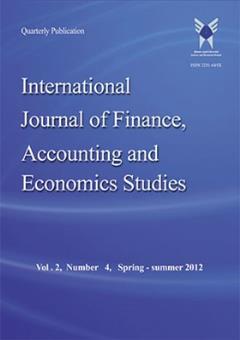Competency model of leaders of world-class government organizations
محورهای موضوعی : International Journal of Finance, Accounting and Economics StudiesHadi Rostami Pashaei 1 , Ali Rezaeian 2 , Hasan Farsijani 3
1 - Department of Public Administration, Faculty of management, Central Tehran Azad University, Tehran, Iran
2 - Management Faculty, Shahid Beheshti University, Tehran, Iran
3 - Management Faculty, Shahid Beheshti University, Tehran, Iran
کلید واژه: leadership competence, government organizations, world-class, theme analysis,
چکیده مقاله :
Background: In the last decade, world-class leadership as a new approach to improving the competitive advantage of organizations has attracted the attention of many researchers in different fields. Purpose: The purpose of this research is to provide a model of competence of leaders of government organizations in the world-class. Method: In terms of paradigm, the approach of this research is in the interpretation group, and to collect data, an interview technique, and purposeful sampling method are used, and the research strategy is thematic analysis. Findings: The main finding of this research is to provide a model of competence of leaders of government organizations in the world-class. This model is theorized in three levels causal conditions, interactive dimension, and consequential dimension. Based on the findings of the research, common demand in the global environment, environmental dynamics in the global market, and global competition as causal conditions on interactive dimension factors that include world-class leadership, creating a common goal and vision, joint venture, and international investment. It means that its result is known as a competitive advantage in the consequent dimension. Conclusion: The model obtained from this research draws the attention of managers to the global environment to gain a competitive advantage. Based on research, to achieve world-class leadership competence, organizations should pay more attention to common demand, global dynamics, competition, leadership, creating a common goal and vision, joint venture, and international investment in their organizations.
Background: In the last decade, world-class leadership as a new approach to improving the competitive advantage of organizations has attracted the attention of many researchers in different fields. Purpose: The purpose of this research is to provide a model of competence of leaders of government organizations in the world-class. Method: In terms of paradigm, the approach of this research is in the interpretation group, and to collect data, an interview technique, and purposeful sampling method are used, and the research strategy is thematic analysis. Findings: The main finding of this research is to provide a model of competence of leaders of government organizations in the world-class. This model is theorized in three levels causal conditions, interactive dimension, and consequential dimension. Based on the findings of the research, common demand in the global environment, environmental dynamics in the global market, and global competition as causal conditions on interactive dimension factors that include world-class leadership, creating a common goal and vision, joint venture, and international investment. It means that its result is known as a competitive advantage in the consequent dimension. Conclusion: The model obtained from this research draws the attention of managers to the global environment to gain a competitive advantage. Based on research, to achieve world-class leadership competence, organizations should pay more attention to common demand, global dynamics, competition, leadership, creating a common goal and vision, joint venture, and international investment in their organizations.


